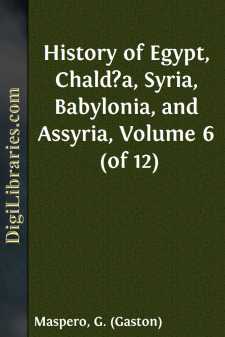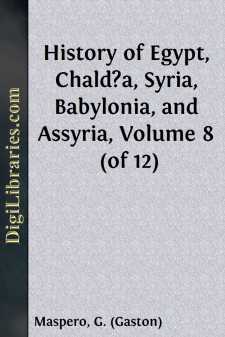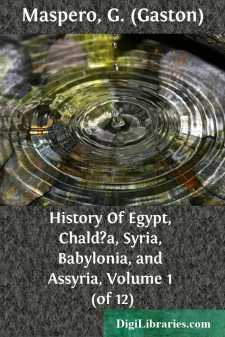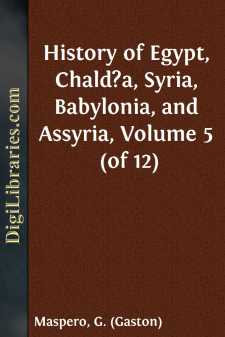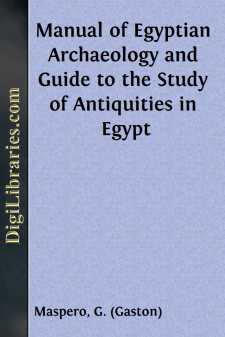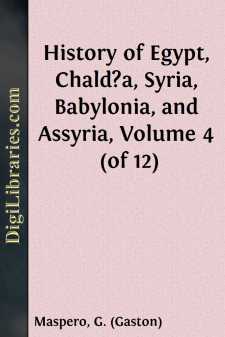Categories
- Antiques & Collectibles 13
- Architecture 36
- Art 48
- Bibles 22
- Biography & Autobiography 813
- Body, Mind & Spirit 141
- Business & Economics 28
- Children's Books 12
- Children's Fiction 9
- Computers 4
- Cooking 94
- Crafts & Hobbies 4
- Drama 346
- Education 46
- Family & Relationships 57
- Fiction 11826
- Games 19
- Gardening 17
- Health & Fitness 34
- History 1377
- House & Home 1
- Humor 147
- Juvenile Fiction 1873
- Juvenile Nonfiction 202
- Language Arts & Disciplines 88
- Law 16
- Literary Collections 686
- Literary Criticism 179
- Mathematics 13
- Medical 41
- Music 40
- Nature 179
- Non-Classifiable 1768
- Performing Arts 7
- Periodicals 1453
- Philosophy 64
- Photography 2
- Poetry 896
- Political Science 203
- Psychology 42
- Reference 154
- Religion 513
- Science 126
- Self-Help 83
- Social Science 81
- Sports & Recreation 34
- Study Aids 3
- Technology & Engineering 59
- Transportation 23
- Travel 463
- True Crime 29
History of Egypt, Chald?a, Syria, Babylonia, and Assyria, Volume 9 (of 12)
Description:
Excerpt
CHAPTER I—THE IRANIAN CONQUEST
The Iranian religions—Cyrus in Lydia and at Babylon: Cambyses in Egypt —Darius and the organisation of the empire.
The Median empire is the least known of all those which held sway for a time over the destinies of a portion of Western Asia. The reason of this is not to be ascribed to the shortness of its duration: the Chaldæan empire of Nebuchadrezzar lasted for a period quite as brief, and yet the main outlines of its history can be established with some certainty in spite of large blanks and much obscurity. Whereas at Babylon, moreover, original documents abound, enabling us to put together, feature by feature, the picture of its ancient civilisation and of the chronology of its kings, we possess no contemporary monuments of Ecbatana to furnish direct information as to its history. To form any idea of the Median kings or their people, we are reduced to haphazard notices gleaned from the chroniclers of other lands, retailing a few isolated facts, anecdotes, legends, and conjectures, and, as these materials reach us through the medium of the Babylonians or the Greeks of the fifth or sixth century B.C., the picture which we endeavour to compose from them is always imperfect or out of perspective. We seemingly catch glimpses of ostentatious luxury, of a political and military organisation, and a method of government analogous to that which prevailed at later periods among the Persians, but more imperfect, ruder, and nearer to barbarism—a Persia, in fact, in the rudimentary stage, with its ruling spirit and essential characteristics as yet undeveloped. The machinery of state had doubtless been adopted almost in its entirety from the political organisations which obtained in the kingdoms of Assyria, Elam, and Chaldæa, with which sovereignties the founders of the Median empire had held in turns relations as vassals, enemies, and allies; but once we penetrate this veneer of Mesopotamian civilisation and reach the inner life of the people, we find in the religion they profess—mingled with some borrowed traits—a world of unfamiliar myths and dogmas of native origin.
The main outlines of this religion were already fixed when the Medes rose in rebellion against Assur-bani-pal; and the very name of Confessor—Fravartîsh—applied to the chief of that day, proves that it was the faith of the royal family. It was a religion common to all the Iranians, the Persians as well as the Medes, and legend honoured as its first lawgiver and expounder an ancient prophet named Zarathustra, known to us as Zoroaster.* Most classical writers relegated Zoroaster to some remote age of antiquity—thus he is variously said to have lived six thousand years before the death of Plato,** five thousand before the Trojan war,*** one thousand before Moses, and six hundred before Xerxes' campaign against Athens; while some few only affirmed that he had lived at a comparatively recent period, and made him out a disciple of the philosopher Pythagoras, who flourished about the middle of the fifth century B.C.
...



